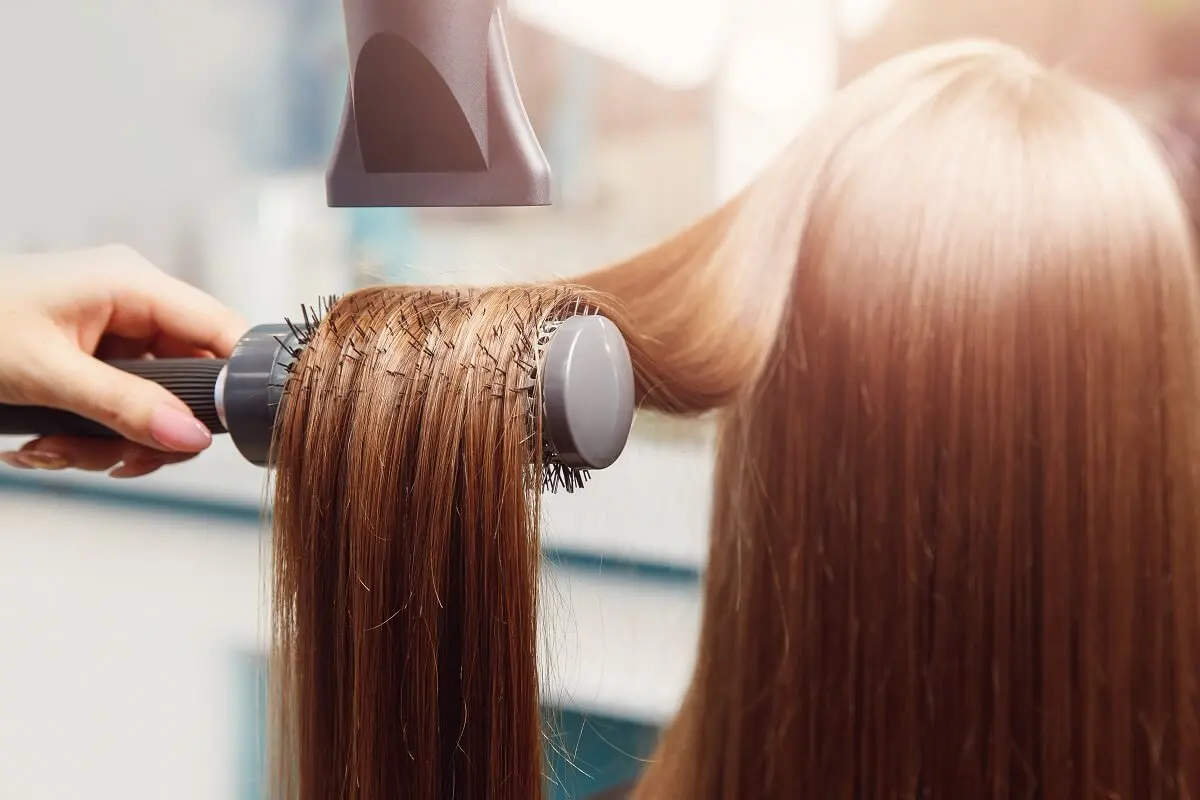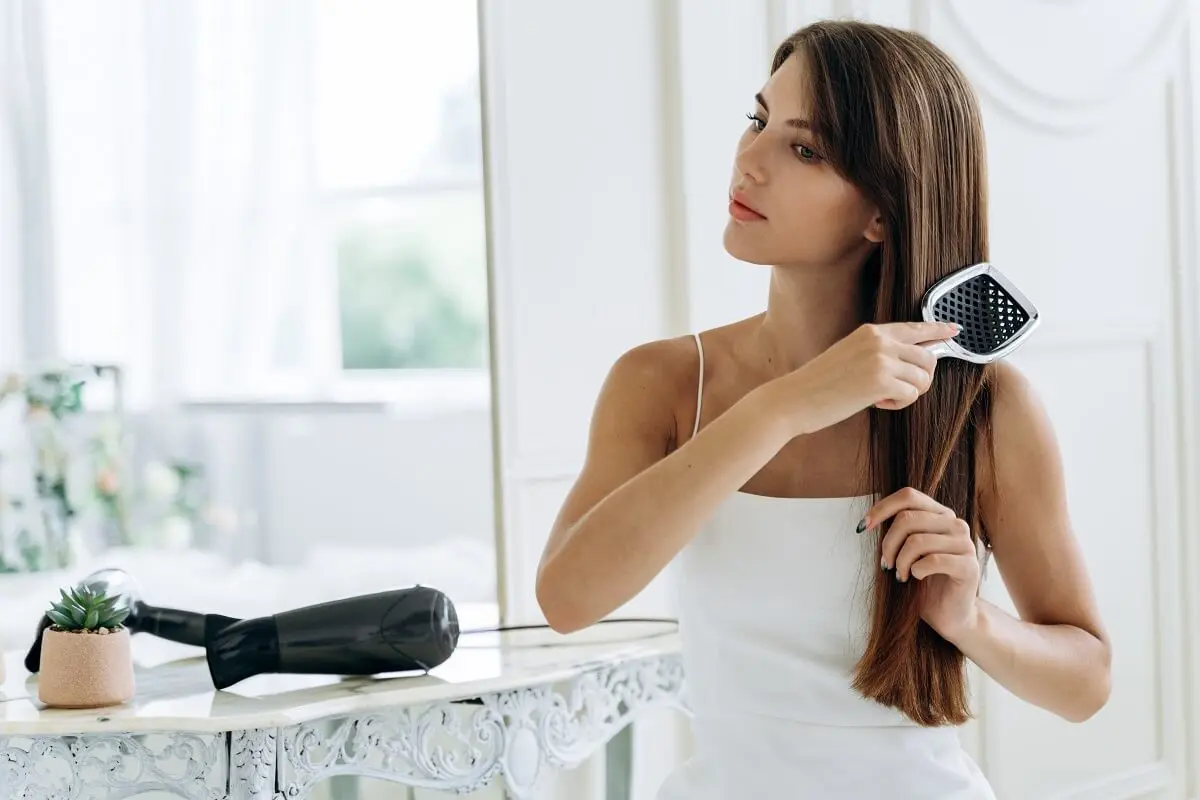Types of Hairbrush: Which One Should You Choose?

There’s a science to choosing a hairbrush. It’s all about considering both your type of hair and the occasion for which you’re styling your hair when it comes to the types of hairbrushes to choose from. In general, it’s essential that the instrument meets the particular needs of your hair and contributes to the health of your scalp.
But how does this play a role in hair care? Apart from the strands, the bristles touch and massage the skin covering the head. The rubbing of the bristles slightly widens the blood vessels, which promotes circulation, and at the same time, you get into a healthy grooming habit.
The quality of the brush and its shape affect how much damage a hair can suffer or, on the contrary, help to achieve silkiness, prevent hair loss, and promote growth. If you don’t know the variety that exists on the market, you’ve come to the right place to find out!
How to choose the right hair brush
The characteristics of the hair are essential for choosing the right brush. From this point of view, fine hair does well with extra soft brushing; on the other hand, it’s best to comb thick hair with mixed bristles (strong and soft).
Curly hair is best treated with wide-toothed combs; but if you have hair with soft waves, brush it with short synthetic fibers. In all cases, the purpose is to help distribute the natural oils produced by the scalp, massage the skin, increase the natural shine, and look good.
By not knowing the relevant information and buying the right brush, you risk damaging the hair. Because of this, the American Academy of Dermatology stresses the importance of styling hair without damaging it, to avoid conditions that lead to hair loss.
For its part, the Mayo Clinic agrees with gentleness during combing, for example, using wide-toothed tools when the strands are wet.
A brush is different from a comb, since the teeth of the former are flexible and those of the latter are harder.

We think you may be interested in reading this, too: Smoky Gold: Check Out the Latest Hair Trend for a Younger Look
Types of hairbrush
Brushes are classified according to the material of the fibers, shape, and utility. Those with plastic bristles work on all types of hair and those with natural fibers are recommended for damaged or delicate hair.
There are also those with metallic bristles, appropriate for thick hair, although they must be used with great care so that they don’t tear. Finally, within the fiber categorization, there are mixed brushes – those made with both natural and synthetic bristles.
In terms of shape and use, here are the different types of brushes and the benefits of each one.
Round brushes
These are drying shapers. They come in different thicknesses; while the thinner or tightly curved one is useful for short hairs, the medium one gives body from bangs to ends and the thicker one gives volume.
Thermal brushes
This is the type of brush you commonly see in salons, which is useful for blow-drying. It features mixed bristles and a hollow handle with minimal holes to increase air circulation.
The design of these brushes accelerates styling by containing heat in the barrel, often made of ceramic, titanium, or tourmaline. Thermal brushes are recommended if you want to give your mane movement, have extra long, stiff hair, or are looking to “tame” your bangs.
Skeleton or vent brushes
Due to the structure of skeleton brushes, they provide an ideal venting system for fast drying. They allow air to pass through as you comb.
They have distant, thin bristles made of plastic, which makes it easy to detangle curly hair without breaking it. They contribute to volume, so they’re often used in the final look of hairstyles.
Padded brushes
This is perhaps the most popular brush on the market, and therefore the one most often used at home. It adapts to all textures and lengths, and its ergonomics make it easy to handle. In addition, its cushioned base and plastic teeth with rubber tips are excellent scalp protectors.
Wood brushes
This is a brush with wooden bristles, but this doesn’t interfere with the softness it offers during styling, to the point of massaging. The teeth are wide and separated, which is beneficial for scalps with high sensitivity.
Regarding the subject, Farmacia Profesional states that hair requires daily brushing that massages with non-aggressive resources for the capillary fiber. Wood meets this requirement. They are biodegradable brushes, beneficial to condition from roots to ends and to get rid of frizz.
Hairbrushes for extensions
They consist of brushes with exclusive loops to comb extensions because these locks inserted into the natural hair require delicate treatment.
Detangling types of hairbrush
If you tend to get knots in your hair, then this is the right brush for you. The distribution of its synthetic and flexible bristles helps to detangle without tugging any kind of hair. It’s useful on wet or dry hair, using the following tips:
- Apply a detangling spray.
- Start at the ends and work your way up slowly.
- Don’t pull when the knot is tight and, if necessary, use your fingers to gently detangle it.
Paddle or racket brushes
This is a flattened, close-toothed brush with a small ball at the tip for massaging and untangling knots. The fibers are natural, nylon, or ionic, suggested if you want to add volume or shape certain looks.
There is a padded variation for straight hair, but the conventional ones are usually used on frizzy and long hair.
Types of hairbrush: Finishing brushes
With natural or synthetic bristles or a combination, these brushes perfect hairstyles or give certain shapes to the hair.

Like this article? You may also like to read: Get Silky Shiny Hair with this Banana and Avocado Hair Mask
Recommendations to make the best use of your hairbrush
The functionality of a hairbrush reaches its maximum if you complement it with sprays or styling serums or creams, as they make brushing easier and provide nutrients to the hair fiber.
Finally, remember to always treat your hair gently. Comb when your hair is dry, or use a brush with fairly wide bristles to reduce the chances of breakage if your hair is still wet. So, which type of hairbrush do you use?
All cited sources were thoroughly reviewed by our team to ensure their quality, reliability, currency, and validity. The bibliography of this article was considered reliable and of academic or scientific accuracy.
- Azcona L. (2007). Salud capilar. Consejos prácticos. Farmacia Profesional, 21(2), 58-61. España. https://www.elsevier.es/es-revista-farmacia-profesional-3-articulo-salud-capilar-consejos-practicos-13099513
- Personal Clínica Mayo. (2022). Caída del cabello. Clínica Mayo. Estados Unidos. https://www.mayoclinic.org/diseases-conditions/hair-loss/symptoms-causes/syc-20372926
- Redacción AAD. ¿Tiene pérdida o caída del cabello? Academia Americana de Dermatología. Estados Unidos. https://www.aad.org/public/diseases/hair-loss/insider/shedding
This text is provided for informational purposes only and does not replace consultation with a professional. If in doubt, consult your specialist.








